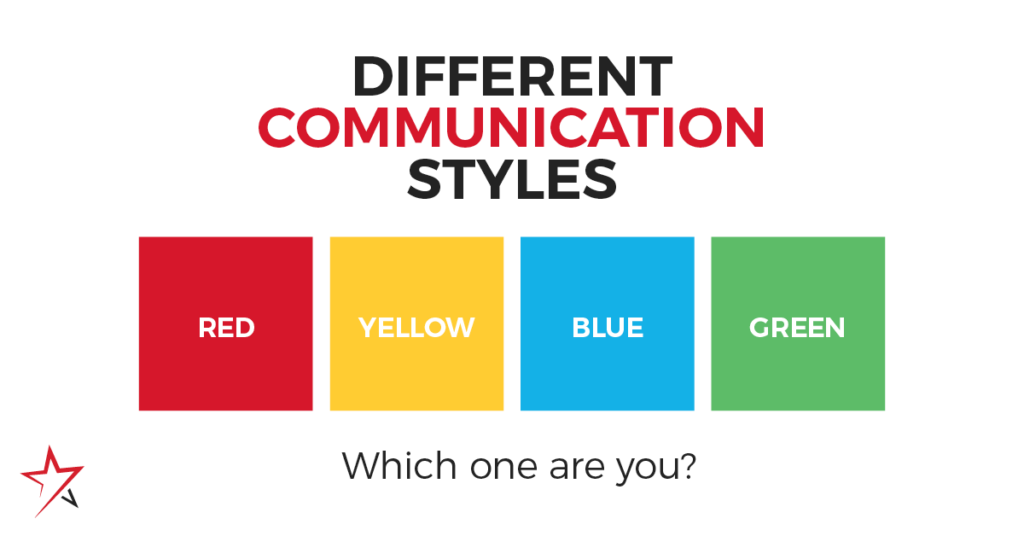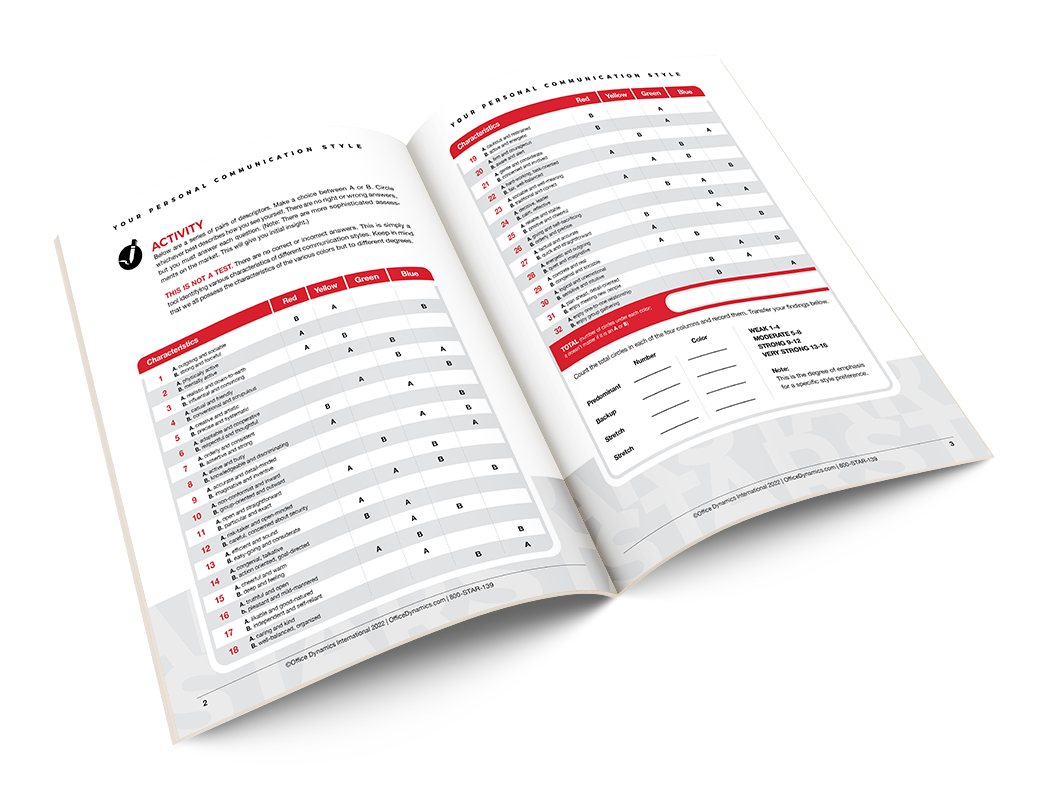The word communicate is derived from the Latin word communis, meaning commonness. When communicating, we are trying to establish common ground with others. We are trying to share information, encourage or inspire others, build rapport, or persuade someone to make a change or see our point of view. In order to accomplish this, you will want to consider whether the receiver has a preferred communication style so you can tap into it.
Some people are detailed thinkers and like to communicate lots of details. While they may think they are being effective with the receiver, the receiver might think, “Information overload. Please stop.” That would be my reaction. I am a big-picture thinker. I think of the details, but that comes after the big picture. And I prefer people to communicate with me in a big-picture fashion. If I want more information, I will ask for them. Of course, it helps me a lot that my assistant, Melia, is a detailed thinker.
In my years of experience as a trainer, mentor, and coach for administrative professionals worldwide, I’ve observed that understanding the diverse communication styles of those we interact with can significantly improve our ability to communicate and resolve conflicts effectively. I teach this in our Star Achievement Series® course and our World Class Assistant™ course. When you learn how to communicate and connect with a variety of different communication styles, you’ll often find that people you once thought of as simply “difficult” actually just have a different approach, dissimilar tolerance for conflict, and unique quirks than you do.
You have the power to create harmony. In this blog, I’ll discuss various communication styles and how to best navigate them in the workplace.

Communication Styles
Here is a small sampling of the characteristics of each communication color. You will notice some distinct differences. Please keep in mind this has to do with communication, not personality (for personality differences, visit out blog here).
Red: Concrete, impulsive, risk-taker. Wants to know the short-term objectives of a project. Doesn’t like indecision and vagueness in others. Take charge type, self-assured. Quick to act; spontaneous; likes to be in control; doesn’t like advice; uninterested in personal feelings.
Yellow: Empathetic, personal, intuitive. Emphasis on human relationships and feeling when communicating. Enjoys friendly, informal relationships with everyone. Doesn’t like rigid, bureaucratic, unfeeling management. Full of ideas; dislikes telling people unpleasant things; seeks harmony.
Blue: Introspective, creative, conceptual. They easily make associations. Enjoys expressing ideas. Asks questions for understanding. Responds poorly to authoritative management. Can take small pieces of information and form a whole. Good listener; need to be unique; often unrealistic.
Green: Precise, analytical, impersonal. Likes consistency and logic. Prefers clear procedures, rules, and regulations. Wants guidelines and structure. Needs to know deadlines. Principled, cautious, prefers working alone; likes problem-solving; unemotional.
Once you’ve learned someone’s communication type in the workplace, here are ways you can apply your new understanding of their style:
- Complement your leader’s preferred style. For example, if your executive prefers the red communication style, which is the “big picture,” then hopefully, you can “balance” their style with being more of a detailed thinker. This means you would ask more questions to get more information from your executive. Or you would think of things that your executive has not thought about.
- Build rapport with internal and external customers. If we genuinely want to build rapport with others, we will consider if they have a preferred communication style. If they have a preference, you will want to communicate in their manner so they are open to your ideas and want to work with you.
- Tailor messages so they’re best received and most easily understood by different communication styles. Whether communicating verbally or in writing, you would tailor your news to a person’s preferred communication style. Here are some examples of how you would tailor your messages based on the communication colors.
- Red: big picture; short and to the point; be business-like.
- Yellow: emphasize feelings; be friendly; don’t hurry the discussion.
- Blue: informal; casual; provide small bits of information.
- Green: structured; don’t rush them; be organized and precise.
- Break through social barriers to outstanding job performance by promoting mutual understanding and even greater respect for different communication styles and unique cultures.
- Enhance your persuasive techniques so you can influence decisions and make a more positive impact on the workplace.
Working with Different Communication Styles
Understanding and adapting to various communication styles is integral to establishing effective workplace communication. The four key styles—red, yellow, blue, and green—each represent different characteristics and preferences in interaction. For instance, those preferring the red style are concrete, impulsive, and quick to action, whereas green communicators are precise, analytical, and appreciate structure. Tailoring our approach to these styles can significantly improve the clarity and reception of our messages.
Moreover, effectively navigating these diverse styles has broad implications for the workplace environment. It fosters rapport with colleagues and clients, improving collaboration and teamwork. It also allows for better comprehension and respect for the unique cultures represented within the workforce. Furthermore, by understanding and adapting to these communication styles, we can enhance our persuasive techniques, enabling us to influence decisions more effectively and positively impact the workplace.
Download the Communication Style Assessment

If you want to discover your personal communication style, download the assessment and take the test.


